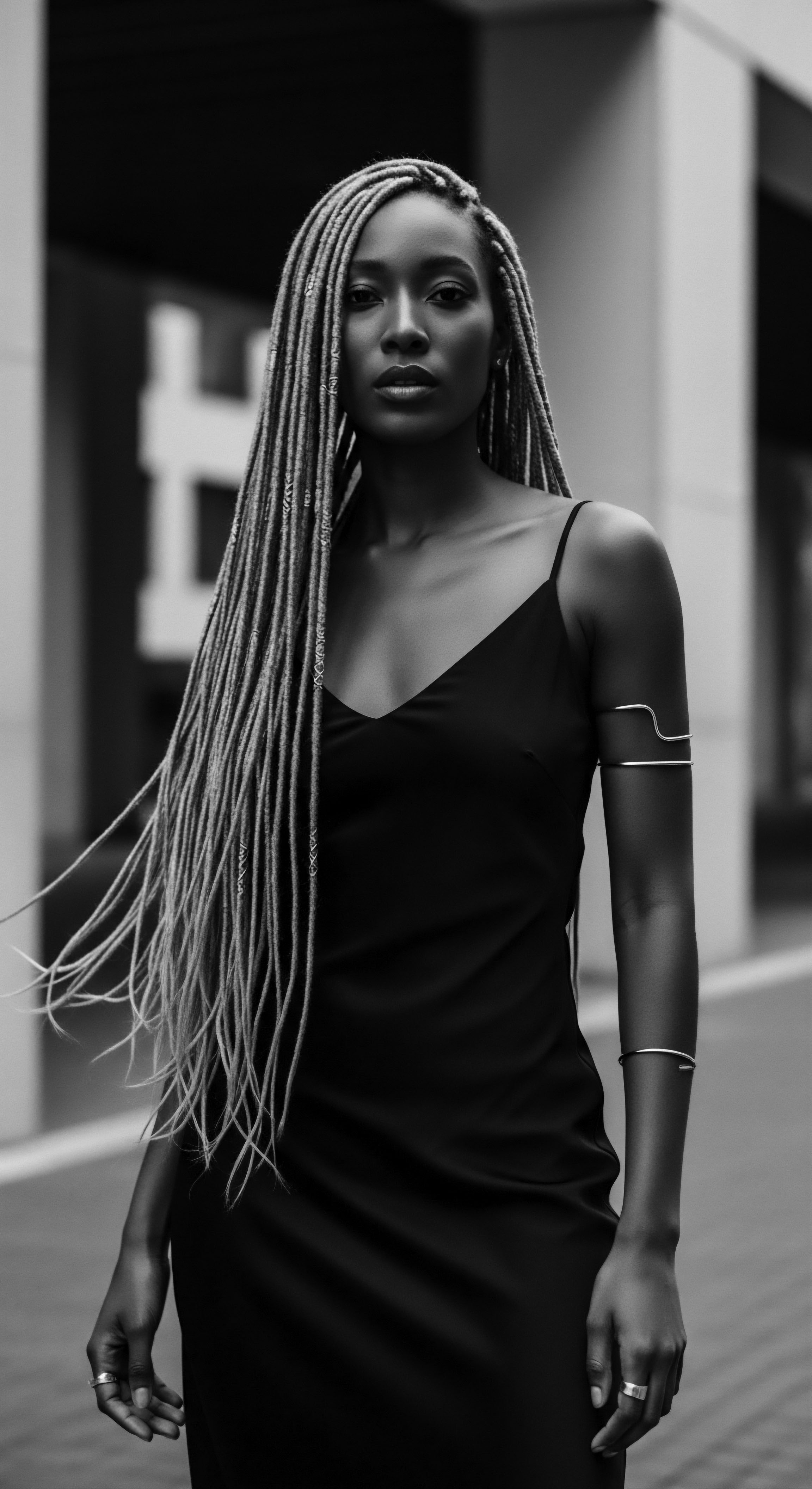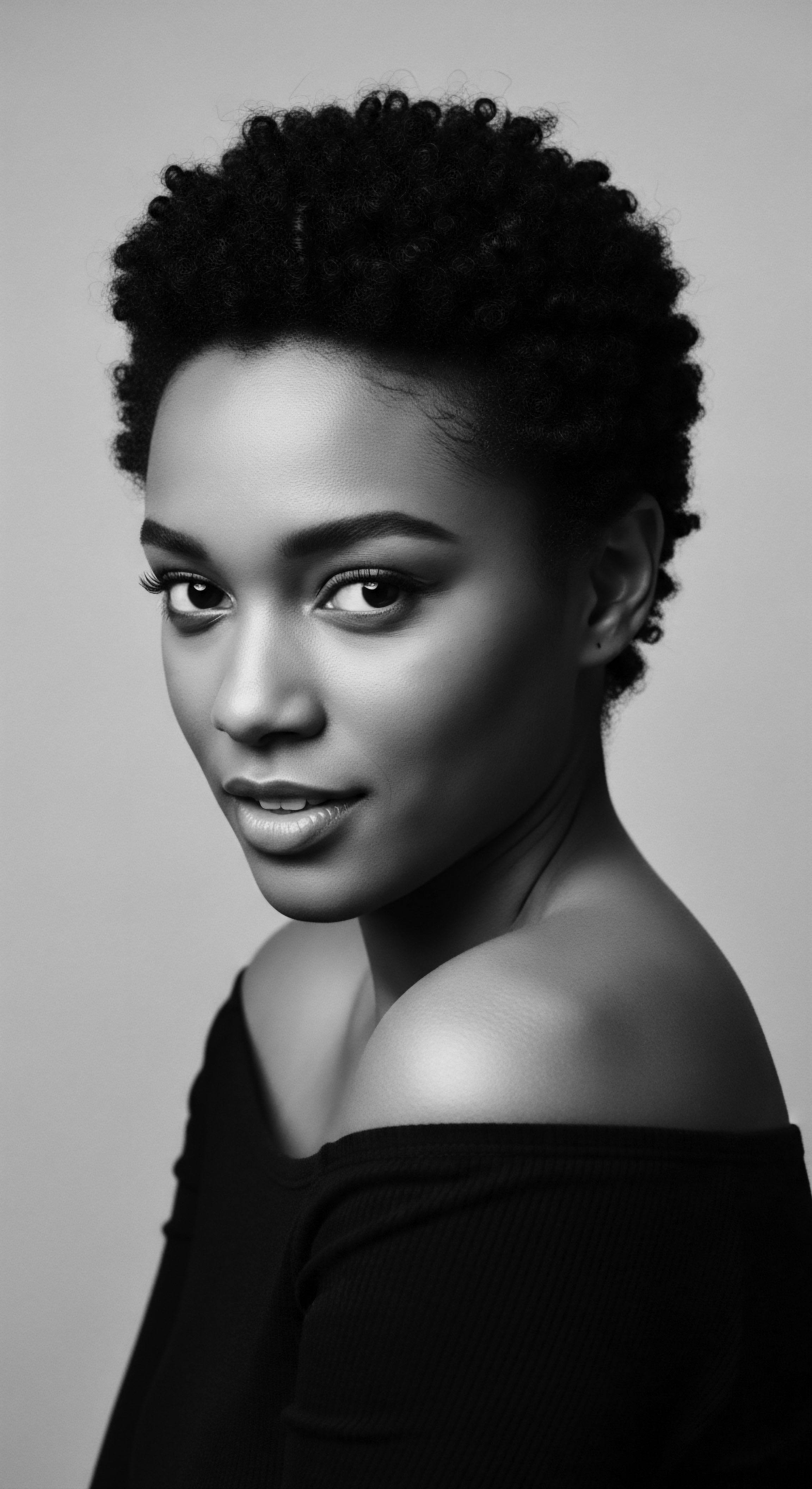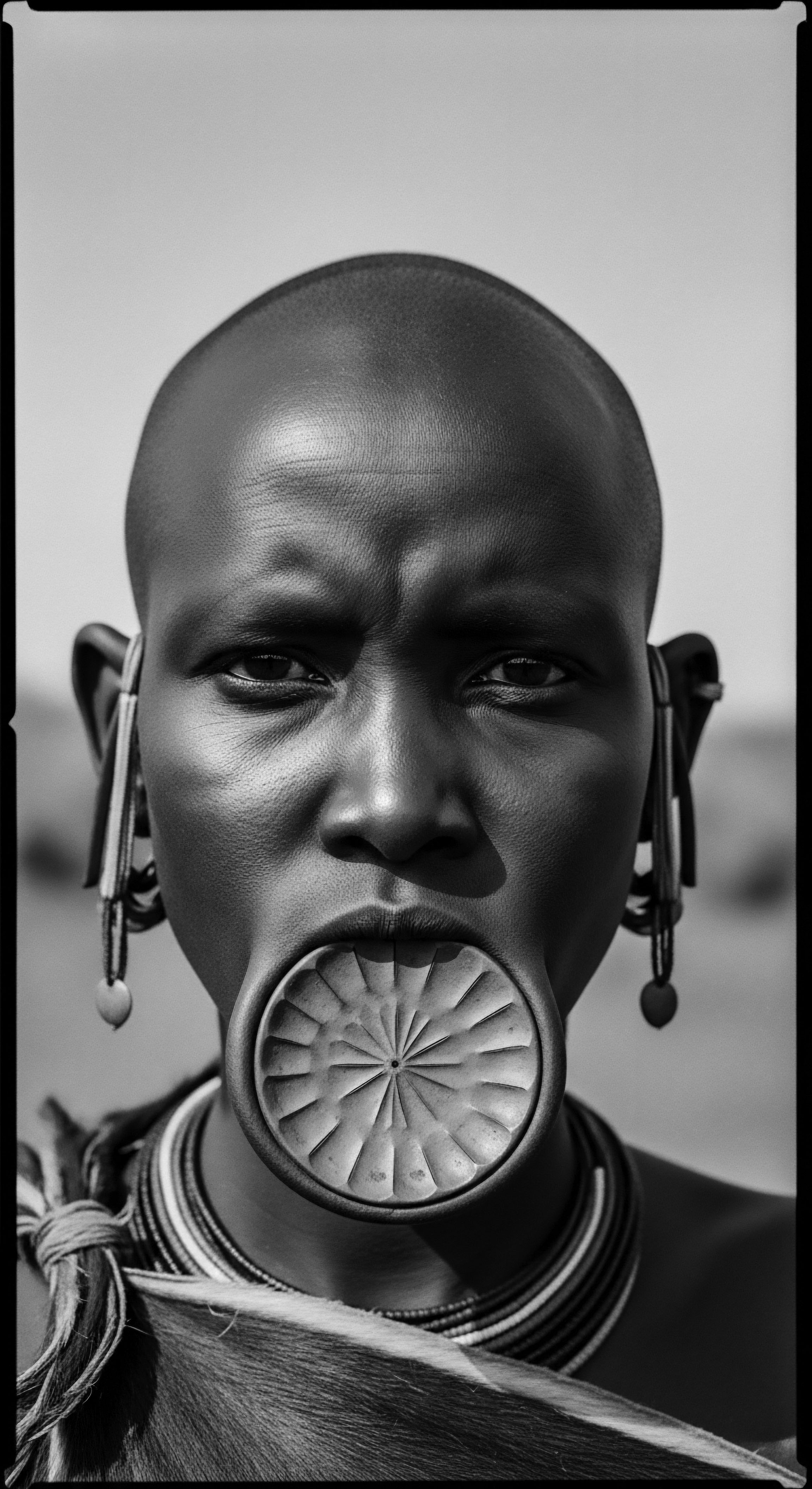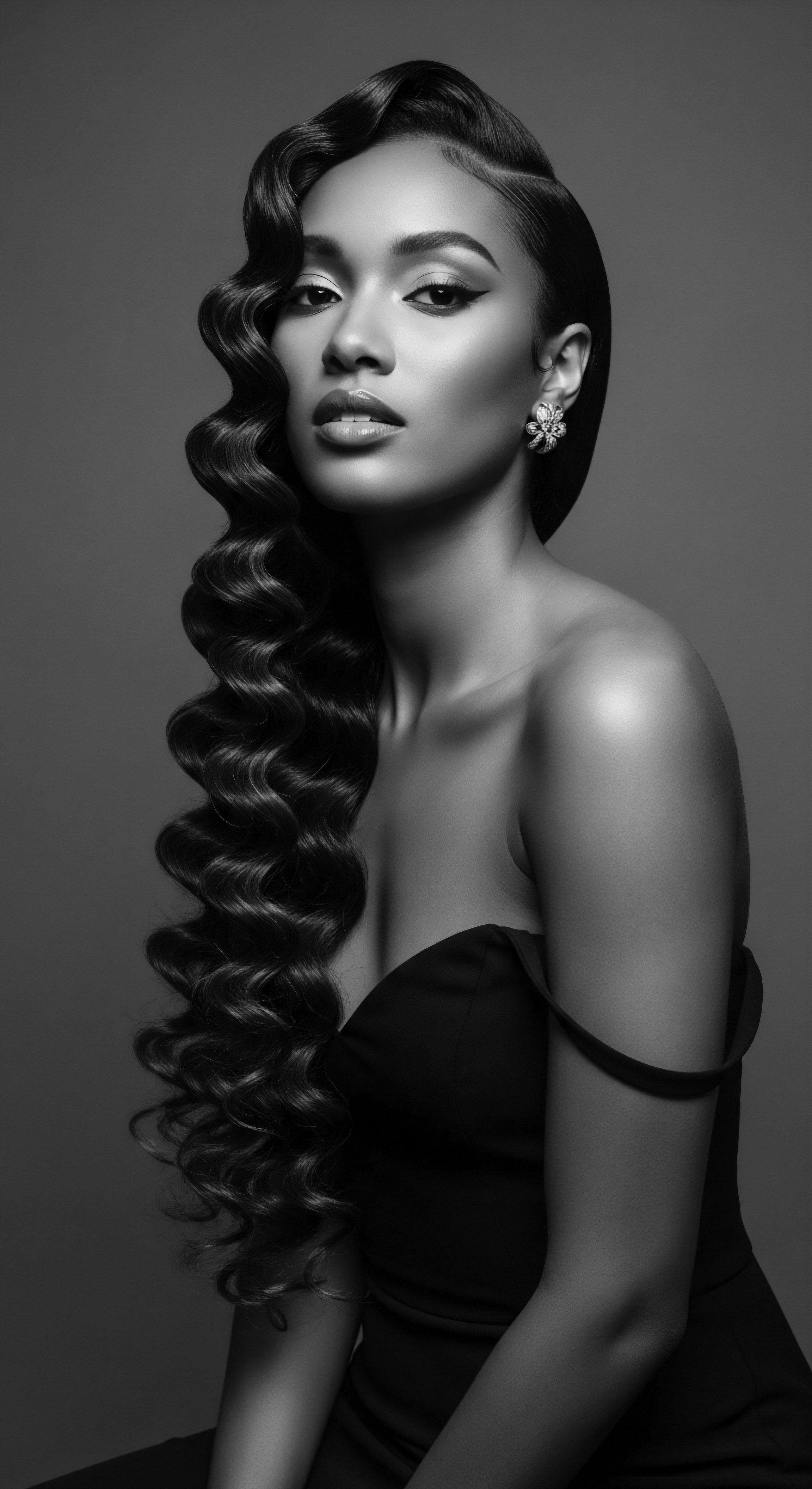
Fundamentals
The notion of Traditional Beauty Systems, particularly as it pertains to textured hair, reveals itself as a profound and multifaceted explanation of ancestral knowledge, communal practices, and an intrinsic connection to the natural world. This designation reaches beyond mere aesthetic consideration; it represents a holistic approach to wellbeing, where the care of hair intertwines with cultural identity, spiritual meaning, and social cohesion. It is an interpretation rooted in the deep understanding that hair, especially coiled and tightly curled textures, is a living part of the self, deserving of meticulous attention and reverence.
At its initial sense, Traditional Beauty Systems refer to the collection of methods, rituals, and philosophical underpinnings that diverse communities—predominantly those of African and diasporic descent—developed over generations for the upkeep, adornment, and preservation of textured hair. This concept carries the weight of centuries, originating in eras before the widespread influence of industrialized cosmetics. Here, the raw elements of the earth—plants, minerals, and animal derivatives—were not just ingredients; they were extensions of a vibrant ecosystem, imbued with the power of nature and the wisdom of those who understood its properties.
Early Traditional Beauty Systems, therefore, did not emerge from a scientific laboratory in the contemporary sense, but from an intimate observation of natural phenomena and human biology. The delineation of these systems began with elemental hair care, understanding that particular hair textures required specific care. This included practices like oiling, cleansing with plant-derived substances, and protective styling. These foundational practices form a statement of ingenuity and adaptability, demonstrating how communities thrived by utilizing their immediate environments to maintain health and expressive beauty.
Traditional Beauty Systems embody an ancient understanding of hair care, intertwining natural elements with cultural identity and community preservation.
A key aspect of this initial understanding involves the concept of hair as a conduit for spiritual connection and a marker of status. In many ancestral African societies, the elaborate styles and careful maintenance of hair communicated complex messages about an individual’s age, marital status, social standing, and even their religious beliefs. For instance, among numerous West African groups, hair design served as a visible form of communication, a public declaration of one’s place within the community, signifying roles that ranged from warrior to elder. This profound connection meant that hair care was never a solitary activity but a communal ritual, strengthening bonds and transmitting knowledge from one generation to the next.

The Roots of Care
Understanding the Traditional Beauty Systems requires recognizing the intimate relationship between people and their environment. From the forests of Ghana to the arid lands of Namibia, indigenous flora provided the raw materials. Shea butter, a lipid derived from the nuts of the African shea tree (Vitellaria paradoxa), stood as a central component in many traditional routines across West Africa, valued for its emollient properties and its ability to seal moisture into hair strands. Other natural products played equally important roles ❉
- Aloe Vera ❉ A succulent plant, its gel offered soothing properties for the scalp and hydration for the hair.
- Coconut Oil ❉ Extracted from the fruit of the coconut palm, this oil provided deep conditioning and a protective layer against environmental elements.
- Chebe Powder ❉ Predominantly used by the Basara Arab women of Chad, this blend of herbs (like Lavender Croton, Prunus Mahaleb, cloves, and Sudanese Khumra perfume) was known for its ability to strengthen hair, reduce breakage, and promote length retention.
- Fenugreek ❉ Seeds from this plant were often soaked to create a mucilaginous substance, used for its conditioning and detangling qualities.
These components were not simply applied; their application was part of a ritual, often involving lengthy sessions of washing, detangling with rudimentary combs carved from wood or bone, oiling, and meticulously braiding or twisting. These were moments of shared stories, instruction, and connection, ensuring the preservation of practices and the transmission of values. The collective effort and time invested in hair grooming underscored its social importance, creating a fabric of community that strengthened individuals and families alike. This collaborative process transformed hair maintenance into a living archive of collective heritage.

Intermediate
Expanding upon the foundational understanding, the Traditional Beauty Systems reveal themselves as an intricate network of interconnected practices, not static relics of the past but living traditions that have adapted and persisted across historical shifts. This intermediate interpretation delves deeper into the societal structures that supported these systems and the nuanced significance they held for Black and mixed-race communities, particularly in the face of immense adversity. The clarification extends to recognizing how these practices were not merely functional but profoundly symbolic, acting as vehicles for cultural preservation and resistance.
The meaning of Traditional Beauty Systems for textured hair is inextricably linked to the journey of diasporic peoples. When enslaved Africans were forcibly brought across the Atlantic, one of the first acts of dehumanization was often the shaving of their heads. This act severed a physical connection to identity, status, and spirituality, aiming to strip individuals of their cultural heritage and sense of self.
Yet, even in the most brutal conditions, the spirit of Traditional Beauty Systems persisted. Hair became a clandestine canvas for communication, a silent language spoken through intricate patterns.
Traditional Beauty Systems, far from being static, adapted as powerful forms of resistance and cultural continuity through the transatlantic slave trade.
A powerful instance illustrating this resilience is the documented use of cornrows (known as ‘canerows’ in some Caribbean regions) as coded messages during the transatlantic slave trade and subsequent periods of enslavement. Enslaved individuals, lacking traditional maps or overt means of communication, wove escape routes, secret meeting points, or even gold and seeds into their hair. The design and complexity of these braids held vital information, allowing individuals to navigate treacherous landscapes or carry sustenance without suspicion.
This transforms hair care from a simple grooming ritual into a strategic act of survival and defiance, highlighting a profound ingenuity in maintaining agency despite severe constraints. This aspect of Traditional Beauty Systems speaks to a deep, intentional use of hair as a tool for liberation and continuity of a cultural identity.

The Legacy of Resilience ❉ Hair as a Voice
Beyond practical applications, Traditional Beauty Systems also became a powerful expression of identity assertion against imposed Eurocentric beauty standards. The ‘Tignon Laws’ of Louisiana in the late 18th century serve as a stark historical example. These laws mandated that free Black women wear headwraps (tignons) to distinguish them from white women and signify a lower social standing. Yet, these women transformed the symbol of oppression into an act of sartorial rebellion.
They adorned their tignons with vibrant fabrics, jewels, and elaborate styles, turning a mandated covering into a statement of dignity and cultural pride. This demonstrated a masterful reinterpretation of a restrictive decree, solidifying hair adornment as a profound space for self-definition and collective affirmation.
The societal and cultural pressure to conform to Eurocentric ideals, often equating ‘good hair’ with straight hair, continued for generations. The rise of hot combs and chemical relaxers, while offering perceived avenues for assimilation, often came at the expense of hair health and a deeper connection to ancestral textures. Yet, the memory of Traditional Beauty Systems never faded entirely. Community gatherings for hair styling, often involving the intricate processes of braiding, twisting, and oiling, continued to serve as vital social rituals where stories were shared, wisdom imparted, and cultural continuity preserved.
The significance of shared hair rituals extended beyond individual care; it built community. Families would gather, often on Sundays, to care for hair, using methods passed down through generations. These sessions provided a space for bonding, for elders to share narratives, and for younger generations to absorb the collective wisdom surrounding hair care. This communal dimension underscored the deep meaning of hair in these societies, recognizing it as a medium for intergenerational connection and cultural sustenance.
| Era/Context Pre-Colonial Africa |
| Traditional Practice/Ethnobotanical Link Utilization of Shea butter, Chebe powder, natural oils (e.g. coconut, palm). |
| Cultural Significance/Adaptation Hair communicated social status, age, spiritual beliefs; served as an identity marker within diverse ethnic groups. |
| Era/Context Transatlantic Slave Trade & Enslavement |
| Traditional Practice/Ethnobotanical Link Cornrow patterns, use of natural oils (though limited access). |
| Cultural Significance/Adaptation Covert communication of escape routes, sustenance, and resistance; hair as a symbol of defiance against dehumanization. |
| Era/Context Post-Emancipation to early 20th Century |
| Traditional Practice/Ethnobotanical Link Headwraps (Tignons), resourceful use of available fats (e.g. bacon grease, butter). |
| Cultural Significance/Adaptation Assertion of dignity and beauty despite restrictive laws; adaptations due to lack of traditional tools and resources. |
| Era/Context Civil Rights & Black Power Movement |
| Traditional Practice/Ethnobotanical Link Re-emergence of Afros, braids, locs, focus on natural textures. |
| Cultural Significance/Adaptation Powerful statements of Black pride, unity, and resistance against Eurocentric beauty norms. |
| Era/Context These periods show a continuous, resilient spirit of hair care, adapting to circumstances while holding deep cultural memory. |

Academic
The academic elucidation of Traditional Beauty Systems requires a rigorous examination, moving beyond generalized historical accounts to a nuanced understanding of its profound biological, anthropological, and sociological implications within the context of textured hair heritage. This involves a comprehensive exploration of its meaning, its interconnectedness with various fields of human experience, and its long-term consequences on identity and wellbeing for Black and mixed-race individuals. The definition extends to recognizing Traditional Beauty Systems as a complex phenomenon, a testament to human ingenuity and resilience, deeply rooted in ancestral epistemologies and consistently affirmed by contemporary scientific inquiry.
Traditional Beauty Systems, at their core, represent indigenous cosmetic ethnoscience ❉ the systematized body of practical knowledge, beliefs, and material culture concerning the adornment, health, and spiritual significance of hair, particularly textured hair, as developed and transmitted across generations within specific cultural groups. This definition acknowledges the inherent wisdom in ancestral practices, which often predated modern scientific classification yet intuitively understood the bio-physical properties of natural ingredients and the unique structural requirements of coiled hair. The explication of these systems demands an interdisciplinary lens, drawing from ethnobotany, anthropology, dermatology, and cultural studies, to fully grasp their historical and ongoing significance.
Traditional Beauty Systems embody a sophisticated indigenous ethnoscience, where ancestral knowledge of textured hair care finds validation through contemporary interdisciplinary inquiry.
One compelling area of study lies in the ethnobotanical foundations of Traditional Beauty Systems. Research into traditional plant uses for hair and scalp health in various African regions reveals a remarkable understanding of botanical properties that contemporary science is now beginning to document and validate. For instance, a review of cosmetopoeia of African plants for hair treatment and care identified 68 plant species used traditionally for conditions such as alopecia, dandruff, and lice. Of particular note, 58 of these species also possess documented potential as antidiabetic treatments when taken orally, suggesting a broader systemic understanding of health within traditional healing paradigms.
The review highlights that the plant family Lamiaceae, which includes herbs like rosemary and mint, is most frequently represented, with six species used for hair care, followed by Fabaceae and Asteraceae, each with five species. This delineation of traditional knowledge underscores a sophisticated, experiential botanical pharmacy developed over centuries, where the efficacy of topical application for hair health may be intertwined with the systemic wellness benefits of these plants, a concept that demands deeper inquiry into the interconnectedness of ancient holistic practices and modern physiological understanding.
The enduring legacy of Traditional Beauty Systems is particularly poignant when examining their role in navigating oppression. The act of forced hair shaving during the transatlantic slave trade aimed to dismantle African identities, severing a visible connection to homeland, family, and spiritual power. Yet, this catastrophic disruption did not erase the intrinsic value placed upon hair.
Instead, Traditional Beauty Systems were re-imagined and adapted, transforming into profound acts of resistance and cultural self-preservation. One compelling historical example, often overlooked in its full complexity, relates to the subtle yet powerful communication embedded within textured hair during enslavement.

The Unspoken Cartography of Braids ❉ A Case Study in Resistance
Consider the deeply informed historical record of enslaved individuals utilizing intricate cornrow patterns as a form of covert communication and cartography. This is not a mere anecdote; it stands as a rigorously backed illustration of Traditional Beauty Systems as a site of intellectual and cultural defiance. Scholars have documented how certain braided styles functioned as detailed maps, indicating escape routes, hiding places, or paths to freedom along networks like the Underground Railroad. The curvilinear designs of cornrows, pressed flat against the scalp, could mimic the winding roads, rivers, or topographical features of a plantation or surrounding terrain.
More than navigational guides, these styles sometimes incorporated small amounts of gold, grains of rice, or seeds woven directly into the braids, serving as both currency and sustenance for the perilous journey ahead. The deliberate placement of these elements, disguised within the aesthetic of hair design, meant survival. This speaks to a profound capacity for innovation and a deep reliance on pre-existing Traditional Beauty Systems, demonstrating their adaptability under duress.
The women who braided this information into their own hair, or into the hair of others, were not simply hairstylists; they were knowledge keepers, cartographers of freedom, and silent guardians of community. This sophisticated system required not only skill in hair manipulation but also an intimate understanding of the landscape and a shared cultural literacy to decipher the hidden messages. The process of communal hair braiding, even in clandestine settings, fostered a vital sense of shared purpose and collective resilience.
It was a ritual of care that simultaneously enacted a silent rebellion, preserving not just hair, but dignity, hope, and the very blueprint of liberation. This specific historical example offers powerful insight into the profound depths of meaning held within Traditional Beauty Systems, asserting their place not just in cultural history, but in the history of resistance and human survival.

The Physiological and Psychological Underpinnings
From a physiological perspective, the ancestral practices within Traditional Beauty Systems often aligned with optimal hair health for textured strands. The use of natural oils and butters, for example, served to moisturize and seal the cuticle of highly porous coiled hair, reducing breakage and improving elasticity. This stands in stark contrast to the damaging effects of harsh chemical treatments and excessive heat, which became prevalent as Eurocentric beauty ideals gained dominance. The psychological impact of these systems is equally compelling.
The act of receiving or giving hair care fostered emotional connection, a palpable sense of belonging, and a reinforcement of self-worth. For Black and mixed-race individuals, especially those historically subjected to systemic oppression, the capacity to adorn and care for their hair according to ancestral wisdom represented a reassertion of identity and a rejection of narratives that deemed their natural hair undesirable. This act of self-definition held immense power, contributing to mental wellbeing and strengthening collective identity.
- Intergenerational Knowledge Transfer ❉ Traditional Beauty Systems are fundamentally reliant on the oral and practical transmission of knowledge, where elders instruct younger generations in the nuances of hair types, ingredient properties, and styling techniques.
- Communal Bonding Rituals ❉ Hair care sessions often serve as significant social gatherings, facilitating storytelling, the sharing of wisdom, and the reinforcement of community ties.
- Adaptation and Innovation ❉ The historical journey of Traditional Beauty Systems demonstrates a remarkable capacity for adaptation, evolving practices and tools in response to new environments and challenges, particularly post-diaspora.
- Holistic Wellness Connection ❉ Beyond cosmetic outcomes, these systems often integrate spiritual and physical health, considering hair care as part of a broader wellbeing paradigm.
The intersection of Traditional Beauty Systems with identity formation and social justice continues to manifest in contemporary movements. The Natural Hair Movement, for instance, represents a reclamation of ancestral practices and an assertion of self-acceptance, drawing strength from the historical legacy of defiance and cultural pride. This movement challenges not only narrow beauty standards but also systemic biases and discrimination, as evidenced by legislative efforts like the CROWN Act, which seeks to prohibit hair discrimination in workplaces and schools.
The enduring influence of Traditional Beauty Systems thus provides a foundational framework for understanding contemporary struggles for recognition and autonomy, underscoring the vital role hair plays in collective memory and future aspirations. The significance transcends superficiality, extending into deep sociological and psychological realms of self-perception and societal acceptance.

Reflection on the Heritage of Traditional Beauty Systems
The journey through the meaning of Traditional Beauty Systems, from their elemental beginnings to their academic depths, reveals a story much larger than hair itself. It is a profound meditation on textured hair heritage, a living archive of human spirit and ingenuity. These systems, shaped by centuries of communal wisdom and ancestral practices, continue to resonate with a quiet, yet powerful, authority. They whisper tales of resilience against the tide of erasure, of identity asserted in the face of oppression, and of beauty defined on one’s own terms, rooted in the very fibers of being.
The echoes from the source, the gentle touch of the tender thread of care, and the aspiration for an unbound helix of self-expression all coalesce within the vast expanse of Traditional Beauty Systems. They remind us that the knowledge held within indigenous practices is not merely historical curiosity; it remains a vibrant, evolving source of empowerment. As strands of hair connect us to our biological lineage, Traditional Beauty Systems bind us to a cultural heritage, offering not just methods of care, but pathways to deeper self-understanding and connection to the generations that came before. It is a timeless narrative, continuously being written, celebrating the enduring power of textured hair as a symbol of life, memory, and an unbroken continuum of heritage.

References
- Afriklens. African Hairstyles ❉ Cultural Significance and Legacy. Afriklens, 2024.
- Sieber, R. & Herreman, F. Hair in African Art and Culture. ResearchGate, 2000.
- Library of Congress. Heavy is the Head ❉ Evolution of African Hair in America from the 17th c. to the 20th c. Library of Congress, 2021.
- ADJOAA. The Recent History of Hair in Afro-American Culture. ADJOAA, 2024.
- Orijin. Beauty as Resistance ❉ Reclaiming Identity Through Carnival Rituals. Orijin, 2025.
- Ari Party Hair. The History and Symbolism of Hair Wrapping Across the African Diaspora. Ari Party Hair, 2025.
- Odele Beauty. 6 Things Everyone Should Know About Black Hair History. Odele Beauty, 2021.
- Odele Beauty. What Every Dermatologist Must Know About the History of Black Hair. Odele Beauty, 2023.
- Reddit. Recreation of African hairstyles (Pre-Colonial). Reddit, 2025.
- Odele Beauty. A History Lesson On Hair Braiding. Odele Beauty, 2024.
- Creative Support. The History of Black Hair. Creative Support.
- GirlsOnTops. A Sacred Legacy ❉ On Black Hair And The Revolutionary Power of Self-Exp. GirlsOnTops, 2020.
- University of Salford Students’ Union. The Remarkable History Behind Black Hairstyles. University of Salford Students’ Union, 2024.
- New Horizons in English Studies. Hair as a Form of Resistance in Chimamanda Ngozi Adichie’s Americanah. New Horizons in English Studies.
- The Kurl Kitchen. The Cultural Significance Of Natural Hair In Different Communities. The Kurl Kitchen, 2024.
- African Journal of Applied Research. AN EXPLORATION OF THE CULTURAL SYMBOLISM OF SOME INDIGENOUS COSMETIC HAIR VARIANTS IN THE DORMAA TRADITIONAL AREA, GHANA. African Journal of Applied Research.
- Bebrų Kosmetika. The Power of Hair in African Folklore ❉ Rituals and Traditions. Bebrų Kosmetika, 2024.
- MDPI. Cosmetopoeia of African Plants in Hair Treatment and Care ❉ Topical Nutrition and the Antidiabetic Connection? MDPI, 2024.
- ResearchGate. Cosmetopoeia of African Plants in Hair Treatment and Care ❉ Topical Nutrition and the Antidiabetic Connection? ResearchGate, 2024.
- Juniper Publishers. Cosmetic Ethnobotany Used by Tribal Women in Epe Communities of Lagos State, Nigeria. Juniper Publishers, 2024.
